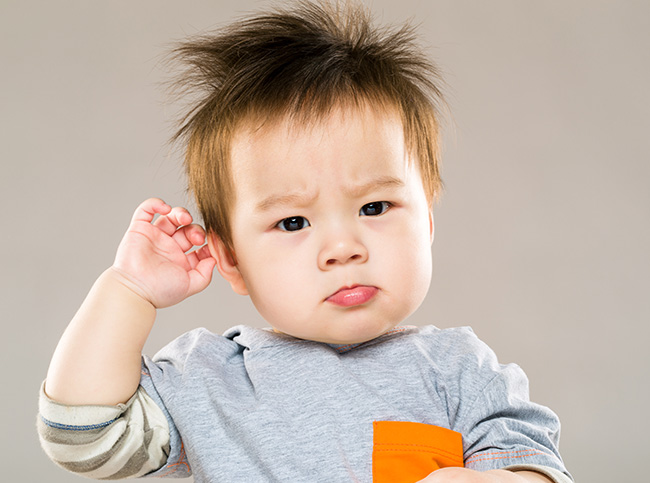Eyes are the window to the soul. Visual impairment caused by eye diseases among infants and young children not only affects their vision in the future, but also increases the burden on families and society. Besides, infants and young children have limited expression ability, so it is difficult to find their eye diseases by themselves. Therefore, it is necessary to seek medical attention and early treatment through parents' observation and vigilance.
Common eye diseases in children
- Retinopathy of prematurity
- Nasolacrimal duct obstruction
- Conjunctivitis (including acute and allergic)
- Strabismus
- Amblyopia
- Congenital cataract
- Congenital glaucoma
- Congenital blepharoptosis
- Retinoblastoma

Acute conjunctivitis
Neonatal infections contracted in the birth canal are mostly caused by bacteria. If they occur within 24 to 72 hours after birth, they are mostly chemical (silver nitrate) or gonococcal infections, while staphylococcus or pneumococcal infections within 5 to 7 days. These diseases must be treated with antibiotic eye drops. Most children's acute conjunctivitis is due to viral infection. If untreated, a few children will suffer from trichiasis caused by permanent conjunctival scarring through the formation of “pseudomembrane.” In addition, there is the possibility of corneal infection. Therefore, parents should be careful. When it comes to allergic conjunctivitis, the symptoms are itchy and red eyes. The disease is not contagious, but not easy to cure, unless allergens are found, and sometimes is accompanied by nasal allergies.
However, even if dacryocystitis with a lot of pus occurs at the very beginning in one or two-month-old babies, the blockage of the nasolacrimal duct must be dealt with ahead of time, with topical antibiotic eye drops given at the same time.
Nasolacrimal duct obstruction
The eyes are full of tears in that there is a film between the nasolacrimal ducts. It will rupture naturally for most people after birth. If this film does not break by itself, it will prevent the tears from flowing downward to the nasal cavity. At this time, as long as we pay attention to the bacterial infection, observe it for 3 to 6 months and give massage, most patients' symptoms will be relieved before the age of one year. If symptoms do not improve, ophthalmologists must use probing and irrigation for nasolacrimal duct obstruction.
Pseudostrabismus
If parents find that the child's eyes are crooked, or when they look left and right, one eyeball cannot be seen, they must ask an ophthalmologist to check for strabismus.
Doctors will use torch light to check the eyes and occlusion therapy. Clinically, about half to two-thirds of children have pseudostrabismus instead of deviation.
Epicanthus
This kind of epicanthus is commonly seen in Asians, especially in infancy. It covers the medial sclera and has a similar appearance to esotropia, so it is called pseudoesotropia. Such pseudostrabismus does not require special treatment, and will disappear naturally when the nasal bone is protruded and the face is fully developed.
Strabismus
Strabismus can be divided into esotropia, exotropia, anopsia and catotropia, among which esotropia is the most common, followed by exotropia. The treatment of strabismus varies from cause to cause, so the doctor’s differential diagnosis is very important.
Trichiasis
Lower eyelid epicanthi or lower eyelid circular muscles are overdeveloped, generally without serious symptoms. However, a small number of children may suffer from corneal damage due to excessive rubbing of their eyes, and some of them need to be corrected by eyelid surgery, depending on the severity of the damage.

